Moisture-proof sockets: an overview of the possibilities, where to use and how to choose
The market of electrical accessories is now striking with an abundance of wiring accessories that can work perfectly in specific operating conditions. Among the proposals featured waterproof sockets. Their advantages and features should be familiarized with before purchase. Do you agree?
We offer reliable information on the specifics of the device and the operation of outlets for rooms with high and unstable humidity levels. Here you will learn how to choose a device for the degree of protection, how to read the product labeling. We will introduce the leading manufacturers in the segment.
A detailed description of sockets for working in conditions of direct and indirect contact with water is supplemented by diagrams, collections of photo illustrations, video presentations and installation instructions.
The content of the article:
Classification of electrical outlets
The socket is a standardized plug for connecting household tools and devices, industrial plants and machines.
To correctly pick up an outlet for a room, you must have at least an initial idea of the types of outlets and take into account several factors when choosing outlets for rooms.
Specialists in the field of electrical wiring distinguish a large number of types and types of outlet products, which can be grouped into several classes:
- By type of mount. They are divided into invoices and hidden. The former are actively used in auxiliary, utility and industrial premises. They are used for retro wiring in cottages made of timber or logs. The second is installed in spaces where the main attention is paid to the interior, namely the absence of any protruding elements on the walls of residential premises.
- By the number of connectors in the socket panel. The most common products with one, two and three connectors. There are products with the number of connectors from four or more pieces. The number of simultaneously connected and working devices in the room depends on this.
- By type of plug. For division into standard groups marking with Latin letters is used. In the countries of the post-Soviet space, C, E, and F are in use. Although there are at least 13 different outlet plugs in the world, and there are corresponding outlets for them.
Speaking of related factors, it is also necessary to remember the voltage of the power supply network into which we install the outlet: 220 or 380 V. 220 V is used for household appliances, and 380 V is often used to power all kinds of installations, machines, machines, etc.
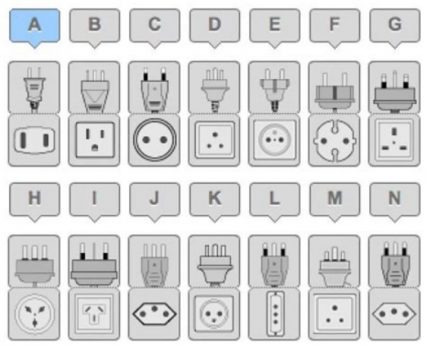
During the selection process, you can pay attention to the color palette of the finished product and especially you need to pay attention to the manufacturer. We strongly do not recommend buying cheap sockets - this indicates the presence of cheap materials in the design, which directly affects the safety and reliability of the product.
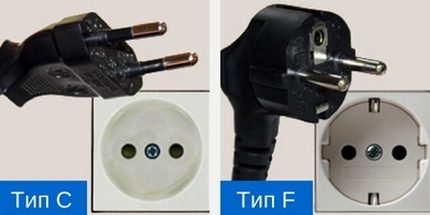
Features of waterproof devices
As noted above, the market of electrical accessories is represented by a wide range of outlet products that meet almost all technical requirements and even protection against moisture and dust.
Such sockets have a special design: a robust housing, a protective valve-cover, an insulated terminal block, a contact group, and necessarily grounding.
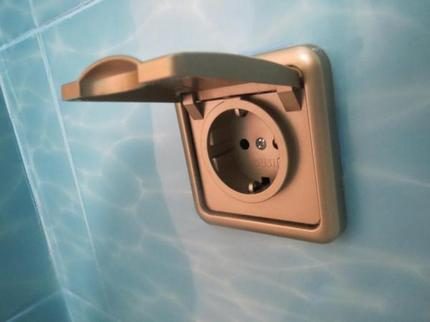
The housings and covers of such outlets are made of special polymer heavy-duty plastics that are able to withstand moisture and low temperatures. The terminal block can also be made of plastic or high-strength ceramic.
The contact group and grounding “petals” are made of alloyed alloys of steel and brass, which allows you to have a reliable and safe connection of the contacts with the plug connector of the electrical device.
This corrosion-resistant product is able to work in the most extreme weather conditions, with direct contact of drops and a stream of water.
A typical moisture-proof outlet has a different form factor; in most cases, it includes a recess in the case for the plug and a protective cover. A recess protects the socket from the lateral influence of water, and the cover prevents direct moisture from entering the socket openings.

And yet, the case and the cover of the socket protect the terminal block from dust and other abrasive particles, which can adversely affect the state of electrical contact between the power supply network and the electrical device.
To compare the degree of protection against moisture and dust relative to the shell of a product, use the so-called parameter - Ingress Protection (IP).
The degree of protection of the shell
Protection of the shell or case of any device that has electrical parts / elements inside is one of the main characteristics of the finished product according to international standards IEC60529 (DIN40050, GOST14254).
In any case, each household electrical appliance and industrial equipment should have a certain degree of protection of the shell, which is determined by the standardized 4-character IPXX code, where:
- IP - means the very concept of the level of protection of equipment;
- the first numeric character X sets the degree of protection against dust and particles;
- the second numerical symbol X sets the degree of protection against moisture and water.
In addition, in the marking of equipment there is another alphabetic additional symbol that indicates the degree of protection of a person from access to hazardous parts and parts of the same equipment. But in relation to waterproof sockets it is not used.
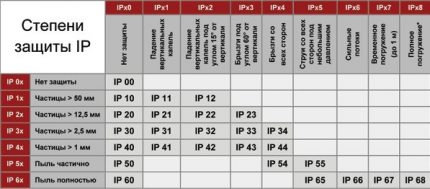
For the first numeric character, we have 7 levels of protection:
- 0 - no protection;
- 1-4 - protection against large bodies (pieces of wire, cable parts, insulation residues, nuts, washers, bolts) and organic particles (stones, earth, sand) with a diameter of more than 1 mm;
- 5 - protection against dust, there is a possibility of penetration of particles into the device, which does not violate its normal operation;
- 6 - protection against dust, particles do not penetrate into the device.
For the second numeric character, we have 9 levels of protection, but we are only interested in options from 3 to 6:
- 3 and 4 - protection against splashes and raindrops;
- 5 - protection against a water stream, which does not interfere with its normal operation;
- 6 - protection against a strong water stream, which does not interfere with its normal operation.
For moisture-proof outlets that are mounted indoors, there are several typical enclosure protection labels, such as IP44 or IP45.
For outdoor moisture-proof outdoor sockets - IP54 / 55, but the most common and widely used are markings of class IP65 / 66, which are recommended for purchase for external use.
Use of moisture protected outlets
On the use of ordinary sockets, questions practically do not arise - where necessary, we put it there.
But another thing is a waterproof outlet - a special class of outlets that are used in special cases, namely:
- bathrooms, and bathrooms of apartments (houses);
- cosmetology centers and fitness clubs where water procedures, saunas, baths, steam rooms, showers are provided;
- pools and entertainment centers such as dolphinariums, water parks, etc .;
- “Street” application (on the outside of buildings) and industrial facilities.
The bathroom of a classic apartment has long ceased to be an archaic room with only a washbasin and a cast-iron bathtub; now it is a high-tech room in which “washing machines”, hydromassages, jacuzzis, boilers, electric hoods and dryers are installed.
Do not forget about the need for an outlet for a hairdryer, curling iron, electric shaver and much more. The bathroom also needs such basic things as an electric hood and a hand dryer after washing. All this "good" should be powered by a reliable source - an electrical network through a moisture-proof outlet.
Current beauty salons, sports fitness clubs provide more than a wide range of beauty and wellness services, which include water treatments.
To provide such services safely, they also use moisture-proof sockets, which include an extensive list of electrical appliances and equipment: from a dryer to a tubular electric heater (ten-a) for “heating” stones in a sauna.
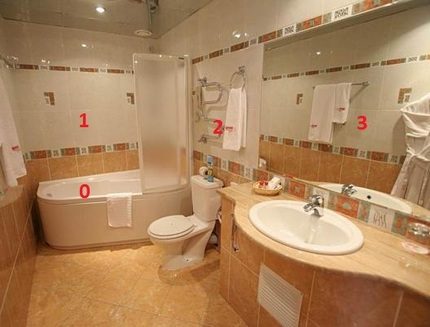
There is no need to talk about the need for moisture-proof outlets in the pool or water park. It is not possible, and most importantly safe, to turn on a single water ring pump or other discharge unit to ensure the circulation of water in the tank or the presence of the required strength of the water flow on the attraction.
A huge amount of industrial equipment is powered by the mains in the most extreme weather conditions or with the presence of fluid inside the unit.
In order to eliminate the systematic or accidental negative influence of moisture on the electrical connection between the power supply network and equipment, moisture-proof sockets with the maximum protection class of the shell are used everywhere.
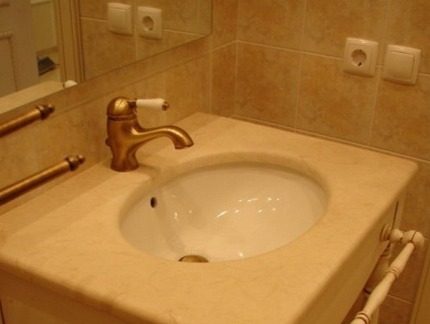
General safety rules
It is clear that for the safe use of household appliances and auxiliary equipment, you must follow the trivial safety rules when connecting, disconnecting the appliance to the outlet.
For example, before plugging the plug into a power outlet, inspect the cavity of the power outlet and make sure that there are no foreign objects in the power outlet, and there is no burning material and “dark” spots on the surface of the power outlet and near it on the wall surface where it is installed.

Next, inspect the electrical cable itself and the plug, check the absence of exposed parts of the wire and darkening on the cable. In case of detection of the above factors, refuse to use this appliance, call a specialist. Or check the fault yourself if you have the appropriate skills.
When disconnecting the plug from the outlet, it is recommended that you hold the surface of the outside panel of the outlet with your free hand and gently pull the plug out of the outlet. If you sharply “pull out” the plug from the outlet, you can “pull” the terminal strip from the socket.
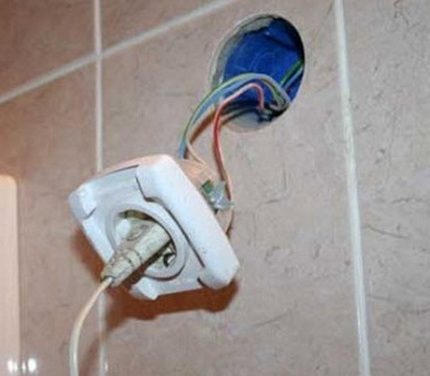
Everyone knows that water is an excellent substance for transmitting an electric charge, therefore, any contact of moisture with a conductive network element, of which there is a socket, must be avoided. Although the outlet itself is protected from moisture, this does not mean that electricity is not able to affect human health.
If you find water near a power outlet, we strongly recommend that you completely disconnect the power supply throughout the room, for example, on a distribution brush, and call a specialist.
Benchmarks for choosing a bathroom device
We proceed directly to the selection algorithm itself and installation of moisture resistant rosettesto for our bathroom. As already noted, the classic current bathroom is a room where a sufficient number of electrical appliances and devices are concentrated.
In order not to make a mistake in choosing a wiring product, you should consider:
- Protection class of the socket. Minimum - IPX4 class, optimally - IPX5 or IPX6 class, all the same, and more than 7 is not rational to buy.
- Design, color and shape. As the saying goes: "There are no comrades for the taste and color." When choosing a socket in the bathroom, you need to take into account the size, shape, presence of a cover, the back panel and more, to harmoniously fit the product into the general surroundings of the room.
- The number of connectors. The reference is the use of two multi-block socket connectors. One is used to connect large equipment (automatic washing machine, hydromassage and other water-therapeutic systems), the second - for “small” electrical household appliances (hair dryer, razor, dryer, extractor hood, additional room lighting).
- Separate machine. When installing moisture-proof sockets in the bathroom, you need to provide a separate power line for them. In addition, connect all of these outlets through the emergency shutdown unit in the distribution panel. Sockets must always be grounded.
There are also special requirements for wiring. The material of the power wires is copper, cable laying in the wall only with a special PVC box.
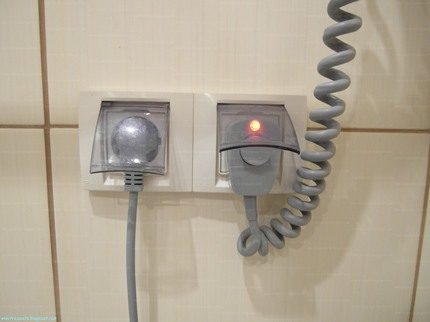
It is worth noting that the above reasoning can be easily applied for the selection and installation of moisture-proof outlets in the utility rooms of a private house, basements, garages, etc. We can only exclude the requirement of design and “beauty” in relation to the external decorative panel of the outlet.
Outlets for outdoor use
If you are the owner of a private house, a country estate or the usual 6 hundredths with a trailer, then there is no need to talk about the variety of situations when a simple outlet is needed “at hand”. In order to avoid the purchase of 100-meter extension cords, it is rational to install the required number of outlets on the outside of any object.
Moisture-proof outlet blocks can be installed almost anywhere: the wall of the building, on the wooden support of the gazebo, on the “deck” of the mini-pool, inside the stone / brick support of the fence, on the outside of the wall is a garage or other utility room.
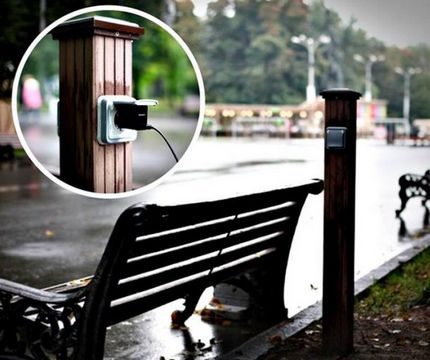
Virtually any electric tool or special equipment that is more economical in terms of energy consumption, unlike devices on gasoline and diesel engines, can easily be connected to such outlet sockets.
For example, we include an electric saw, electric pruning shears, an electric barbecue and an oven submersible pump and discharge water / air compressor. We turn to passive relaxation - we easily connect an external audio system, a television panel and much more to such outlets.
Regardless of the purpose of operating the “street” outlet, we recommend that you follow some notes on the choice of location and method of mounting the electrical connector:
- it is advisable to install the socket under any protrusion or visor;
- height from the earth’s surface is at least 75-80 cm (we take into account the possible level of snow cover);
- the cable for the outlet must be with protective earth;
- supplying the wire to the outlet exclusively from below - this will allow the flowing water not to get inside the electrical equipment.
Protective membranes must be provided inside the outlet, and the contact group is made of bronze or some copper alloy. Such a “street” moisture-proof outlet integrates into individual bag - this will protect the rest of the power supply in the event of a malfunction.
Conclusions and useful video on the topic
A worthy example of the correct selection and installation of a moisture-proof double outlet with the correct connection to a separate circuit breaker:
The following video is presented solely as an introduction to advanced technologies in the field of wiring components production:
Finished products from popular manufacturing companies LEGRAND, SCHNEIDER ELECTRIC and BERKER possess excellent characteristics of durability, reliability and safety.
It is also possible to purchase accessories from the Swedish ABB and the German GIRA, but these firms have a slightly more expensive price due to the use of fairly expensive materials in production, including bronze and gold-plated metals.
We are waiting for your stories about choosing sockets for installation in bathrooms and pools. Please write in the block below, under the text of the article. Ask questions and comment on the material proposed for familiarization here.

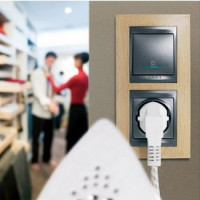 How to choose sockets and switches: an overview of the best brands in today's market
How to choose sockets and switches: an overview of the best brands in today's market 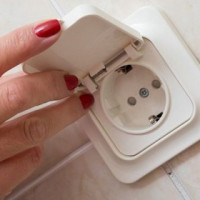 Installing a socket for a washing machine in the bathroom: an overview of the technology of work
Installing a socket for a washing machine in the bathroom: an overview of the technology of work  How to make two from one outlet and how to properly conduct an outlet from an outlet
How to make two from one outlet and how to properly conduct an outlet from an outlet 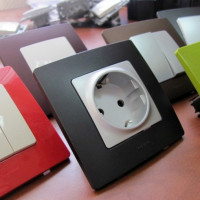 Types of electrical outlets and switches: what are and how to choose wisely
Types of electrical outlets and switches: what are and how to choose wisely 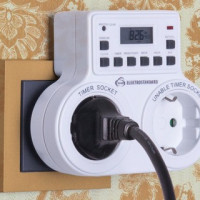 Sockets with a timer: types, principle of operation, which is better to choose and why
Sockets with a timer: types, principle of operation, which is better to choose and why 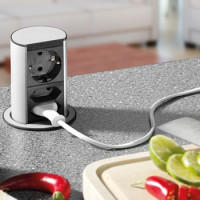 How are pull-out sockets for a countertop arranged and how to install them yourself
How are pull-out sockets for a countertop arranged and how to install them yourself  How much does it cost to connect gas to a private house: the price of organizing gas supply
How much does it cost to connect gas to a private house: the price of organizing gas supply  The best washing machines with dryer: model rating and customer tips
The best washing machines with dryer: model rating and customer tips  What is the color temperature of light and the nuances of choosing the temperature of the lamps to suit your needs
What is the color temperature of light and the nuances of choosing the temperature of the lamps to suit your needs  Replacement of a geyser in an apartment: replacement paperwork + basic norms and requirements
Replacement of a geyser in an apartment: replacement paperwork + basic norms and requirements
Very comfortable and virtually irreplaceable thing in the bathroom. Only buy should products of a reliable brand. I somehow purchased and installed moisture-proof sockets from a cheap manufacturer. So at first it began to burn and melt, since it could not withstand the load. And when I wanted to make out, in order to establish the reason, at first it fell out with mounts, and when I tried to make it out, it began to crumble in parts.
I built a bathroom to the house, combined with a toilet and shower. I went to the construction hypermarket for sockets. I was advised by the moisture-proof sockets of the company Gusi Electric. I liked the design and the quality of this electrical product. I took with a hidden installation. They look beautiful, chose a metallic color. The lid does not fall when opened, which is very convenient. And so, he closed the order, he won’t get any moisture, nor a curious child’s nose.
Moisture-proof sockets, of course, are used in places of high humidity. I even installed these in my house, although everything is in order with the humidity level. But there is always a risk of accidental ingress of water, so it is better to install such outlets anytime, anywhere. What I like about them is the appearance and, in fact, the waterproofing protection itself. But despite the fact that they prevent the penetration of water into the electrical part, it is nevertheless necessary to adhere to the rules for using sockets and not to neglect safety.
What is the point of overpaying and putting them everywhere? This is a specialized thing for a bath / pool / bath.